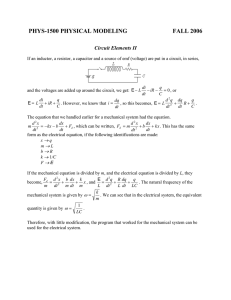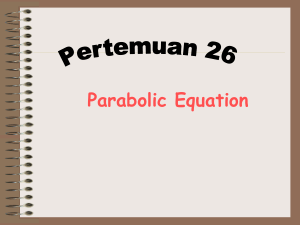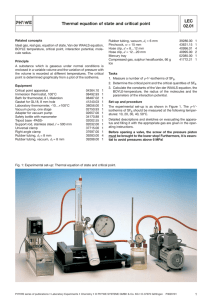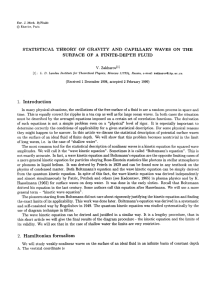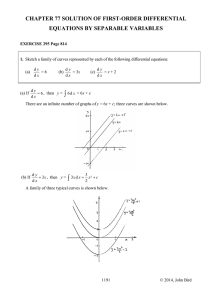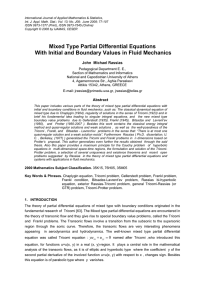Lecture 20 : Linear Differential Equations A First Order Linear
advertisement
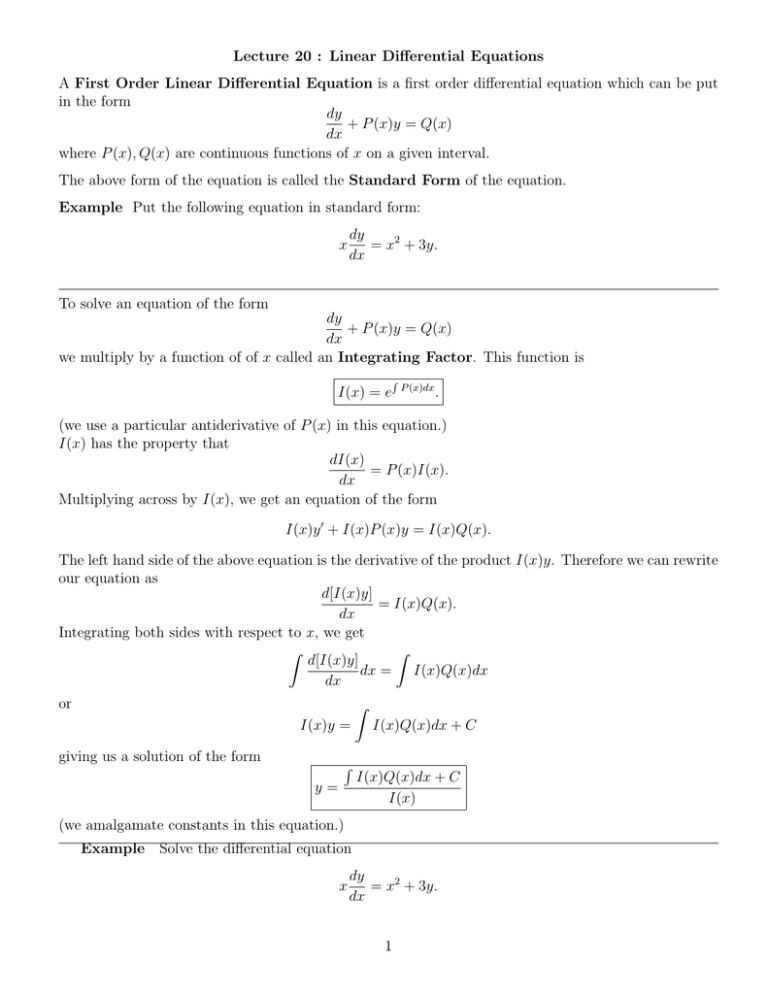
Lecture 20 : Linear Differential Equations A First Order Linear Differential Equation is a first order differential equation which can be put in the form dy + P (x)y = Q(x) dx where P (x), Q(x) are continuous functions of x on a given interval. The above form of the equation is called the Standard Form of the equation. Example Put the following equation in standard form: x dy = x2 + 3y. dx To solve an equation of the form dy + P (x)y = Q(x) dx we multiply by a function of of x called an Integrating Factor. This function is I(x) = e R P (x)dx . (we use a particular antiderivative of P (x) in this equation.) I(x) has the property that dI(x) = P (x)I(x). dx Multiplying across by I(x), we get an equation of the form I(x)y 0 + I(x)P (x)y = I(x)Q(x). The left hand side of the above equation is the derivative of the product I(x)y. Therefore we can rewrite our equation as d[I(x)y] = I(x)Q(x). dx Integrating both sides with respect to x, we get Z Z d[I(x)y] dx = I(x)Q(x)dx dx or Z I(x)y = I(x)Q(x)dx + C giving us a solution of the form R y= I(x)Q(x)dx + C I(x) (we amalgamate constants in this equation.) Example Solve the differential equation x dy = x2 + 3y. dx 1 Example Solve the initial value problem y 0 + xy = x, y(0) = −6. 2
